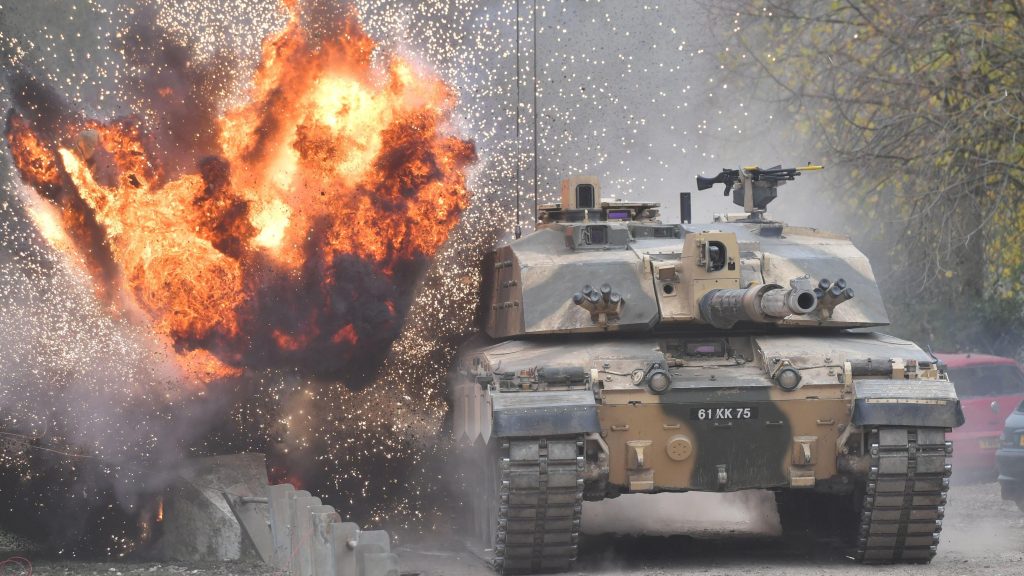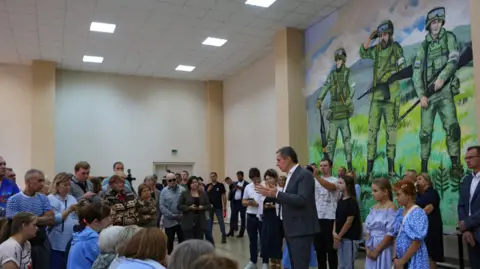UK-Donated Tanks Deployed in Ukraine’s Surprise Incursion into Russia
3 min read

UK-donated Challenger 2 tanks have been utilized by Ukraine in its recent unexpected incursion into Russian territory, according to a UK source. While the UK Ministry of Defence (MoD) has not officially confirmed which specific British weapons are being used, it has reiterated Ukraine’s right to use these weapons for self-defense, which includes operations within Russian borders.
The MoD clarified that while Ukraine is entitled to use UK-supplied equipment in its defense against Russia’s illegal attacks, the use of these weapons must adhere to international law. This policy encompasses a range of UK-provided military equipment, including anti-tank missiles, artillery, and armored vehicles. However, there is a specific restriction regarding the UK’s Storm Shadow missiles. These long-range missiles, originally provided with the condition they would not target inside Russia, are notable for their extended range of over 150 miles, allowing Ukrainian forces to strike from a safe distance.
In July, Ukrainian President Volodymyr Zelensky urged the UK to collaborate with Western allies to lift restrictions on the use of such weapons, arguing that enhanced long-range capabilities could compel Russia to negotiate peace. UK Defence Secretary John Healey acknowledged ongoing, intensive discussions on this matter but did not provide further details.
 The UK was an early supporter of Ukraine’s military needs, supplying 14 Challenger 2 tanks in 2023 to bolster Ukraine’s capabilities during a challenging summer offensive. One of these tanks was reportedly destroyed in the operation. Despite these setbacks, the deployment of Western-supplied military equipment has continued, including sightings of US Bradley and Stryker armored vehicles and German Marders within Russian territory.
The UK was an early supporter of Ukraine’s military needs, supplying 14 Challenger 2 tanks in 2023 to bolster Ukraine’s capabilities during a challenging summer offensive. One of these tanks was reportedly destroyed in the operation. Despite these setbacks, the deployment of Western-supplied military equipment has continued, including sightings of US Bradley and Stryker armored vehicles and German Marders within Russian territory.
Western military analysts have praised Ukraine’s latest offensive for its effective use of a “combined arms maneuver.” This strategy integrates troops, armored vehicles, artillery, and modern technology like drones and electronic warfare to conduct coordinated attacks. This approach contrasts with previous Ukrainian offensives, which struggled due to heavily fortified Russian positions and extensive minefields.
Ukraine’s recent surprise offensive targeted Russia’s Kursk region along the western border, catching both Russia and its allies off guard. The exact extent of the territory captured by Ukraine remains unclear, with conflicting reports from both sides. Russia has declared a state of emergency in the Kursk and Belgorod regions, and local opposition figures have reported that approximately 180,000 civilians in Kursk need evacuation.
The incursion appears strategically aimed at diverting Russian forces from the Ukrainian front to bolster defenses along Ukraine’s own borders. This development has prompted discussions about the legal and strategic implications of using Western-donated weapons in such operations.
Latvia’s Foreign Minister Baiba Braze stated that NATO legal experts have confirmed the right to self-defense extends to counter-attacks, supporting Ukraine’s actions. This perspective aligns with previous statements from David Cameron, the former UK Foreign Secretary, who affirmed Ukraine’s right to retaliate against Russia.
In response, Russian Foreign Ministry spokeswoman Maria Zakharova interpreted such statements as evidence of Western involvement in a “hybrid war” against Russia. Despite the ongoing controversy and geopolitical tensions, the UK remains a major contributor of military aid to Ukraine, following the US and Germany in its support efforts.